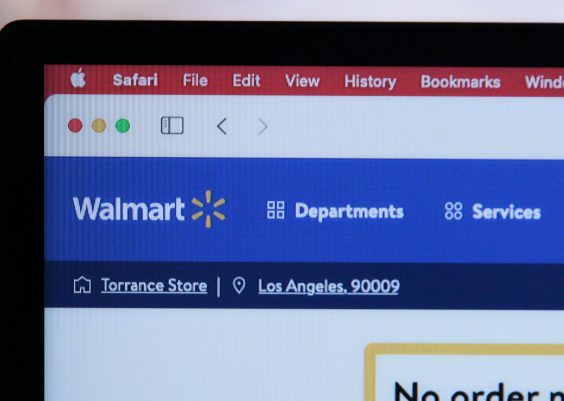If you want to diversify your investments and earn a reliable income, buying T-bills can be a smart choice. They are safe investments backed by the government, making them one of the safest options available. This guide will show you how to buy T-bills, explaining their features and providing step-by-step instructions.
Understanding T-Bills: What Are They and How Do They Work?
T-Bills are short-term debt instruments issued by the U.S. government to raise funds. They have various maturities and are sold at a discount. When they mature, investors get the full face value. T-Bills are very safe and easy to buy and sell.
Why Should You Consider Investing in T-Bills?
Safety
T-Bills are backed by the U.S. government, making them one of the safest investments. The government’s ability to repay its debt is virtually guaranteed.
Liquidity
T-Bills are highly liquid, meaning they can be easily bought and sold in the secondary market before their maturity.
Competitive Returns
While T-Bills are low-risk investments, they still offer competitive returns compared to other short-term investments, such as savings accounts or certificates of deposit (CDs).
Diversification
Adding T-Bills to your investment portfolio can provide diversification and help balance risk.
Factors to Consider Before Buying T-Bills
Investment Horizon
T-Bills are short-term investments, so it’s important to consider your investment horizon and whether the maturity period aligns with your financial goals.
Risk Tolerance
T-Bills are low-risk investments, but it’s essential to assess your risk tolerance and determine if they suit your investment preferences.
Opportunity Cost
Evaluate the potential returns of T-Bills compared to other investment options and consider the opportunity cost of tying up your funds in a low-yield investment.
Tax Implications
While T-Bills are exempt from state and local taxes, they are subject to federal income tax. Consider consulting with a tax advisor to understand the tax implications.
Market Conditions
Monitor prevailing interest rates as they can impact the returns on T-Bills. Generally, higher interest rates translate to higher yields on T-Bills.
How to Buy T-Bills: Step-by-Step Guide
Choose a Brokerage or Financial Institution
Look for a reputable brokerage or financial institution that offers T-Bill investments. Ensure they provide a user-friendly platform and competitive fees.
Set Up an Account
Open an account with the chosen brokerage or financial institution. Provide the necessary identification and financial information to complete the account setup process.
Fund Your Account
Transfer funds into your account using the available funding options provided by the brokerage or financial institution.
Place an Order for T-Bills
Navigate to the order placement section of the platform and specify the T-Bill maturity period and desired investment amount. Verify the order details before confirming the purchase.
Confirm Purchase and Settlement
After confirming the purchase, the brokerage or financial institution will settle the transaction on your behalf. The T-Bills will be credited to your account.
Manage and Monitor Your T-Bills
Regularly review your investment portfolio and monitor the performance of your T-Bills. Track their maturity dates to plan for reinvestment or redemption.
Choosing a Brokerage or Financial Institution
When selecting a brokerage or financial institution to buy T-Bills, consider the following factors:
Reputation and Security
Choose a reputable firm with a track record of reliability and strong security measures to protect your personal and financial information.
Platform Usability
Opt for a user-friendly platform that provides easy access to account information, order placement, and portfolio management tools.
Fees and Commissions
Compare the fees and commissions charged by different providers to ensure you’re getting competitive rates.
Customer Support
Evaluate the quality of customer support services offered by the brokerage or financial institution. Prompt and reliable customer support can be invaluable when dealing with investment-related queries.
Setting Up an Account
To set up an account, follow these general steps:
- Visit the brokerage or financial institution’s website and click on the “Open an Account” or similar button.
- Fill out the required personal and financial information accurately. This may include your name, address, Social Security number, employment details, and investment objectives.
- Complete the identity verification process by providing the necessary documents, such as a copy of your driver’s license or passport.
- Review and agree to the terms and conditions of the account.
- Fund your account using the available funding methods, such as bank transfers or electronic payments.
- Once your account is approved and funded, you’re ready to start investing in T-Bills.
Funding Your Account
Most brokerages and financial institutions offer several funding options:
- Bank Transfer: Link your bank account to your investment account and transfer funds electronically.
- Wire Transfer: Initiate a wire transfer from your bank account directly to your investment account.
- Check Deposit: Write a check payable to the brokerage or financial institution and mail it to the provided address.
- Electronic Payment: Some platforms support electronic payment methods such as PayPal or digital wallets.
Choose the funding option that best suits your preferences and verify any associated fees or processing times.
Placing an Order for T-Bills
To place an order for T-Bills, follow these steps:
- Log in to your brokerage or financial institution account.
- Navigate to the order placement section or search for T-Bills in the investment products menu.
- Specify the desired T-Bill maturity period and investment amount.
- Review the order details, including the yield, discount, and settlement date.
- Confirm the purchase and verify that the funds are available in your account.
- Once the purchase is confirmed, the brokerage or financial institution will execute the order on your behalf.
Managing and Monitoring Your T-Bills
To effectively manage and monitor your T-Bills, consider the following:
- Track Maturity Dates: Stay informed about the maturity dates of your T-Bills. This allows you to plan for reinvestment or redemption.
- Reinvest or Redeem: Decide whether to reinvest the proceeds from maturing T-Bills or redeem them and allocate the funds elsewhere.
- Monitor Yields: Keep an eye on prevailing interest rates and monitor the yields on T-Bills. This can help you make informed decisions regarding future purchases.
- Review Your Portfolio: Regularly review your investment portfolio to assess its performance and make adjustments as needed.
- Stay Informed: Stay updated on market conditions, economic indicators, and any relevant news that may impact T-Bill investments.
T-Bills vs. Other Investment Options: Pros and Cons
T-Bills offer unique advantages and disadvantages compared to other investment options:
| Investment Option | Pros | Cons |
|---|---|---|
| T-Bills | High level of safety, liquidity, and competitive returns | Lower yields compared to riskier investments, short-term nature |
| Savings Accounts | Easy access, low-risk, FDIC-insured | Lower returns compared to other investment options |
| Stocks | Potential for high returns, long-term growth | Higher risk and volatility |
| Bonds | Fixed income, predictable returns | Varying levels of risk depending on the type of bond |
| Mutual Funds | Diversification, professional management | Fees and expenses may erode returns |
T-Bills and Tax Considerations
T-Bills have tax implications that investors should be aware of:
- Federal Income Tax: T-Bill earnings are subject to federal income tax in the year they are earned.
- State and Local Taxes: T-Bills are exempt from state and local taxes, providing potential tax advantages depending on your jurisdiction.
- Tax-Deferred Accounts: Consider holding T-Bills within tax-advantaged accounts such as Individual Retirement Accounts (IRAs) or 401(k)s to defer taxes on earnings until withdrawal.
Consult with a tax advisor to understand the specific tax implications based on your individual circumstances.
Conclusion
Investing in T-Bills is a smart option for people who want a safe investment with good returns. To buy T-Bills, you should understand the process and consider important factors. This will help you make confident decisions and improve your financial portfolio. Remember to think about your goals, how much risk you can handle, and taxes before you invest. Learn more about buying T-Bills and make your investment choices wisely.
Frequently Asked Questions (FAQs)
How do T-Bills differ from other government securities?
T-Bills are short-term debt instruments with maturities of up to one year, while other government securities, such as Treasury bonds and notes, have longer-term maturities.
What is the minimum investment required to buy T-Bills?
The minimum investment amount for T-Bills varies but is typically around $1,000.
Are T-Bills subject to market fluctuations?
T-Bills are generally considered immune to market fluctuations because they are backed by the U.S. government’s credit. However, their market value can still be affected by changes in interest rates.
Can T-Bills be purchased directly from the government?
T-Bills can be purchased directly from the government through the TreasuryDirect website.
How often are T-Bills issued?
T-Bills are issued weekly, with new auctions held every Monday.
Can T-Bills be sold before they mature?
Yes, T-Bills can be sold before they mature in the secondary market, allowing investors to access their funds earlier if needed.




